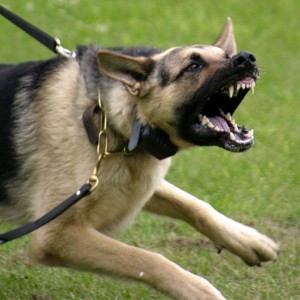 Ever heard the term, “reactive dog?”
Ever heard the term, “reactive dog?”
It has become a very popular term and it is used to describe a dog that barks, lunges, growls or acts aggressive towards other dogs or strangers.
I’ll be holding a class on this for a local shelter next month and spent some time yesterday writing some information on it to distribute. Here is some of what I wrote about what will be covered in the class:
What you need to know about cross associations and how this common occurrence develops into aggressive behavior on leash. (And how one simple, easy to follow tip can help prevent aggressive behavior.)
Cross associations are a big reason for dogs becoming reactive on leash, especially against other dogs. Earlier this week I wrote about being careful of group obedience classes because they really don’t help you learn how to stop behaviors.
Group obedience classes can help you to teach behaviors but many of them fall short when it comes to effectively learning how to END behavior problems.
The other problem with group obedience classes is that in many cases, each dog is issued a choke or prong collar as they walk in the door. This can cause big problems.
You see, when your dog first starts learning obedience they are going through the “learning phase.” This is the early phase we all go through with any new skill. Because you are learning, you will make mistakes. Think about the first time you learned how to drive a stick shift.
You stalled and sputtered along. Hills struck fear in your young sixteen year old heart. Now (if you still drive stick) you can drive with no problem. You can change the radio station, drink a coffee and talk on your cell phone at the same time.
So when your dog is going through the early stages of learning they should not receive any harsh corrections from a prong or choke collar. The best way to train is with markers and a lot of reinforcement.
When a choke or prong collar is issued in a group obedience class the corrections start immediately. Go watch a group obedience class with choke and prong collars and you’ll see a lot of corrections.
And this is where cross associations come in. A dog walks into a group class and starts to pull towards another dog. Since the dog is pulling a correction is given. The dog could associate the correction with the other dog.
If this happens enough times, the dog could make the association that other dogs are bad. And in a few weeks with correction after correction in the presence of other dogs, the dog becomes…..reactive.
Please don’t misunderstand me. I do use corrections to help the dog learn but not in the early learning phase.
You probably have questions. I have answers.
All Q&A is done on the forum of The Dog Training Inner Circle. Along with boatloads of dog training information you can’t go wrong since joining is only $1.00.
Here’s where to go if you want in:
All the best,
Eric

Our local dog training group has 3 rules:
Dogs must wear choke/correction collars.
No treats.
A ban on the command “No”
These rules are the reason that I did not join.
That’s interesting. I wonder why a ban on “NO,” Most trainers that teach with choke collars and no treats usually use NO in much of their training. Interesting.